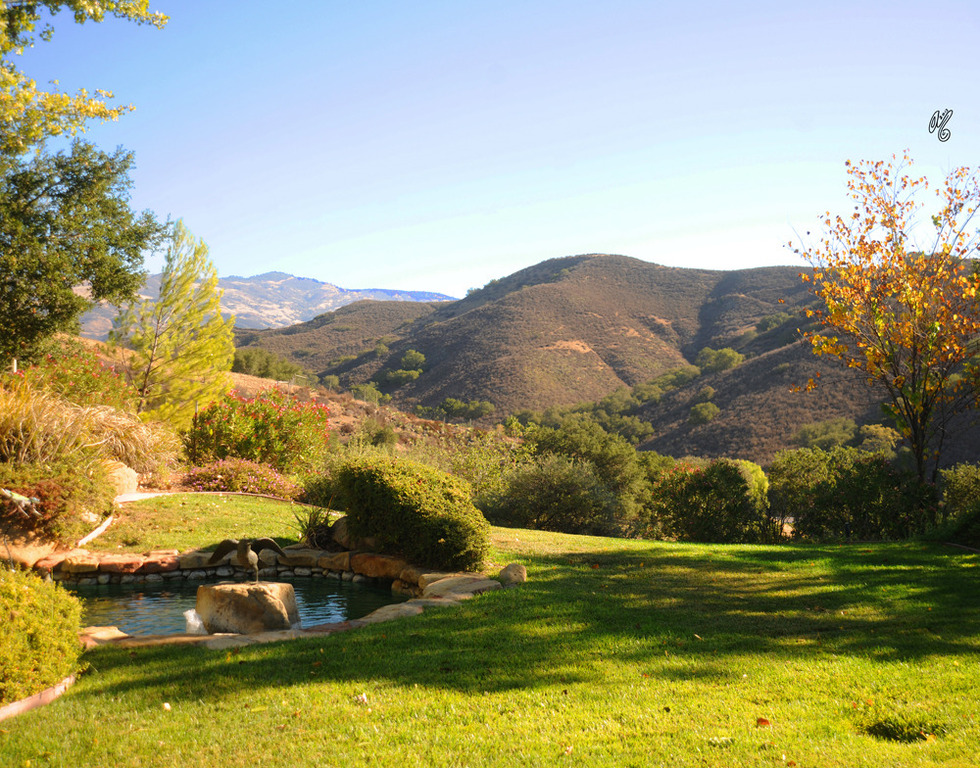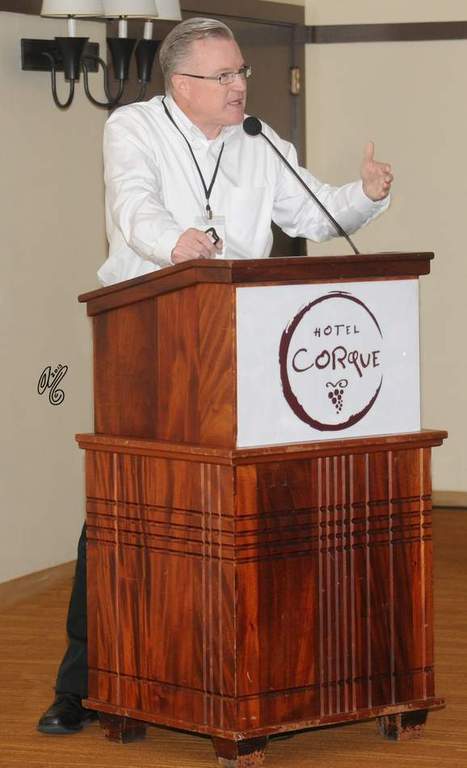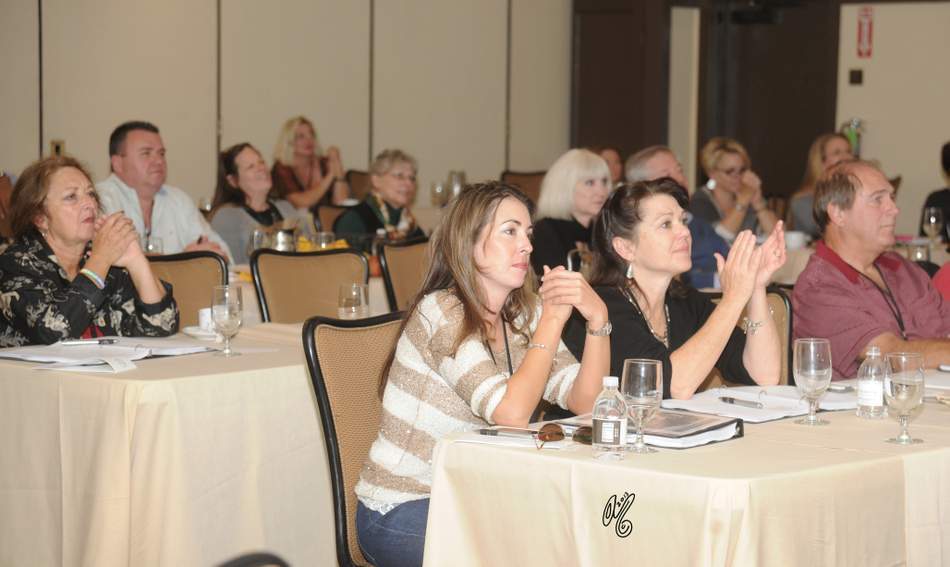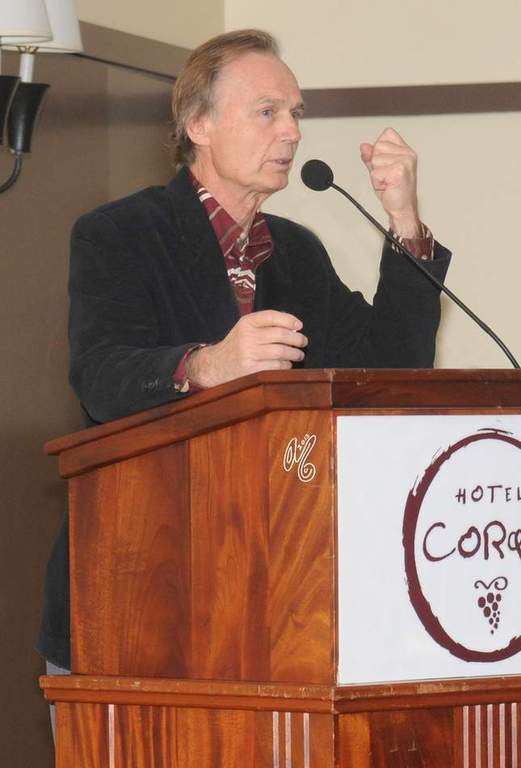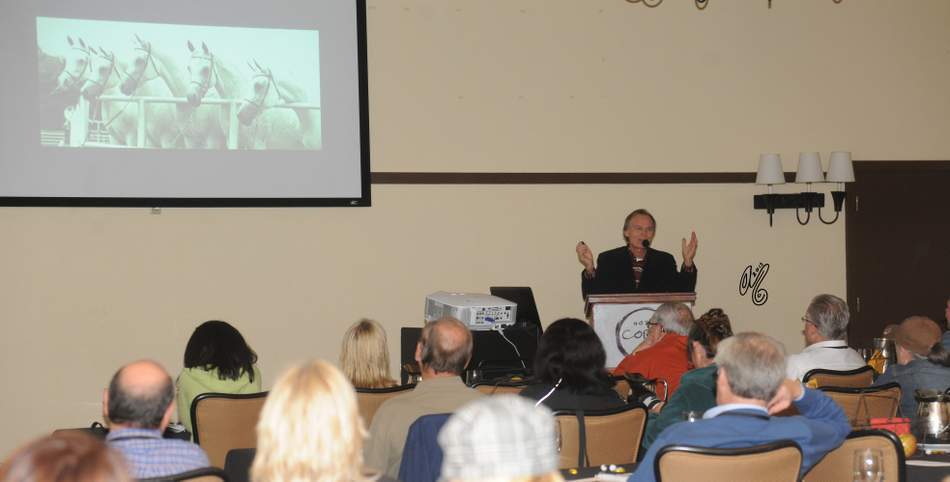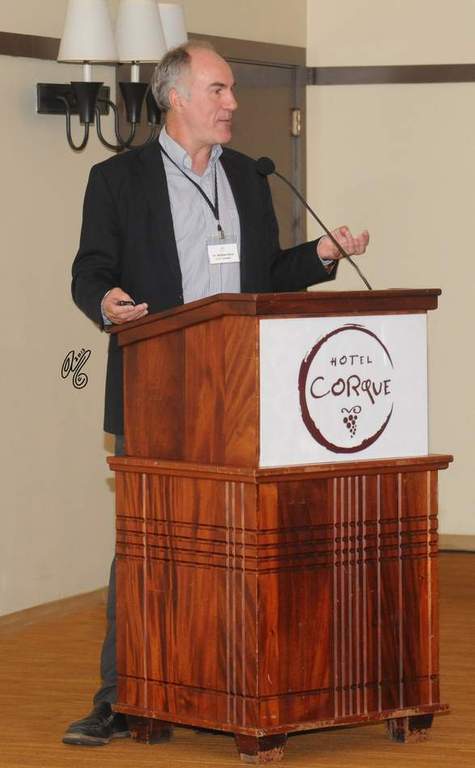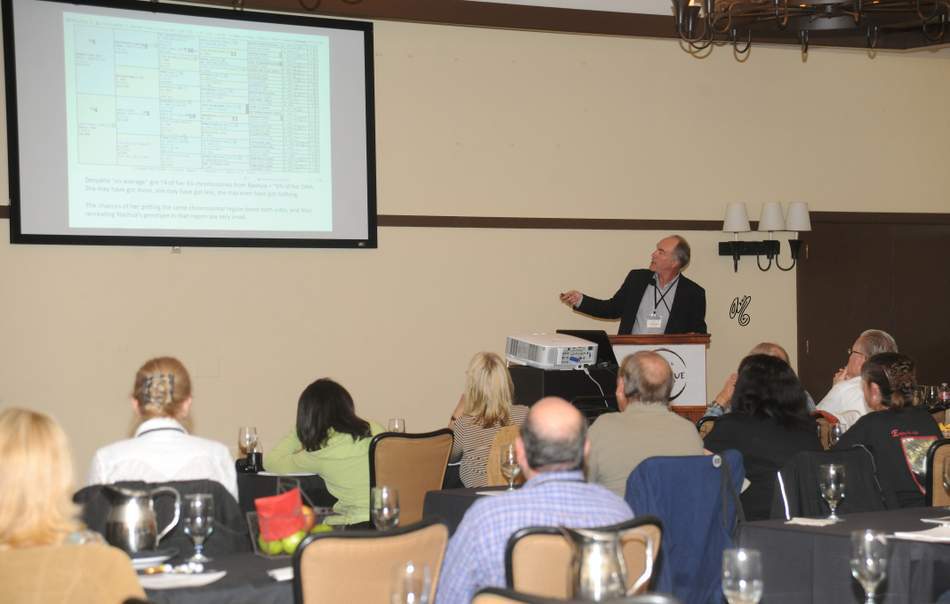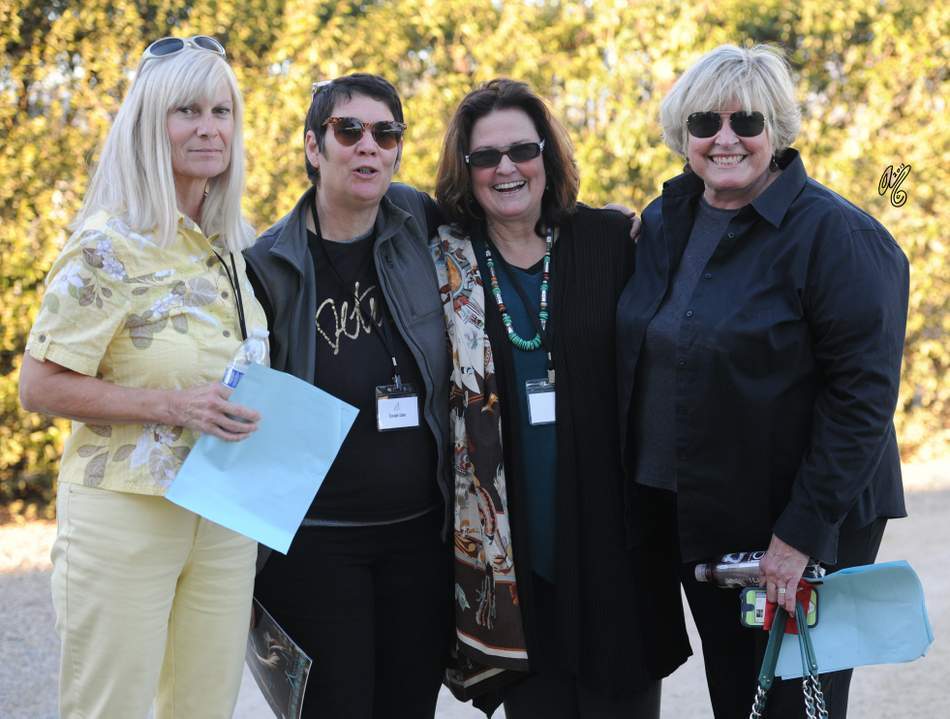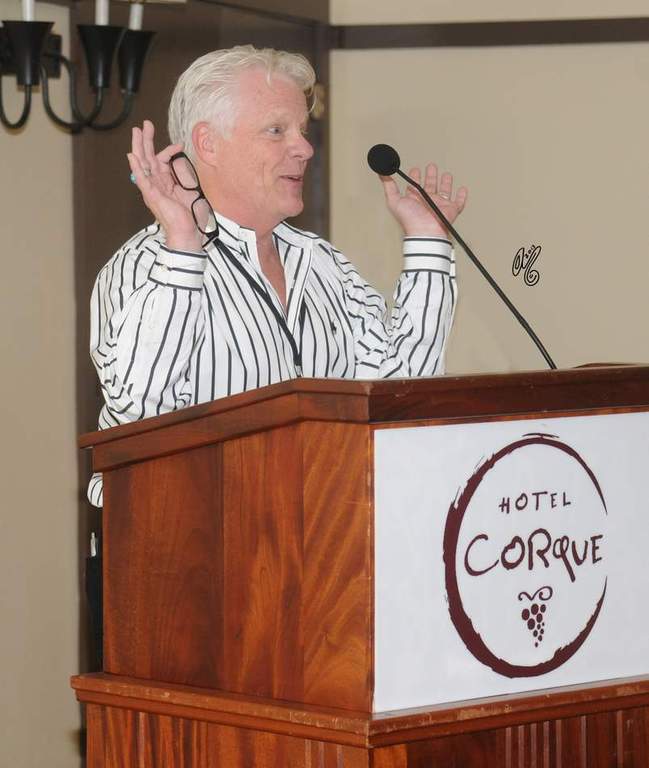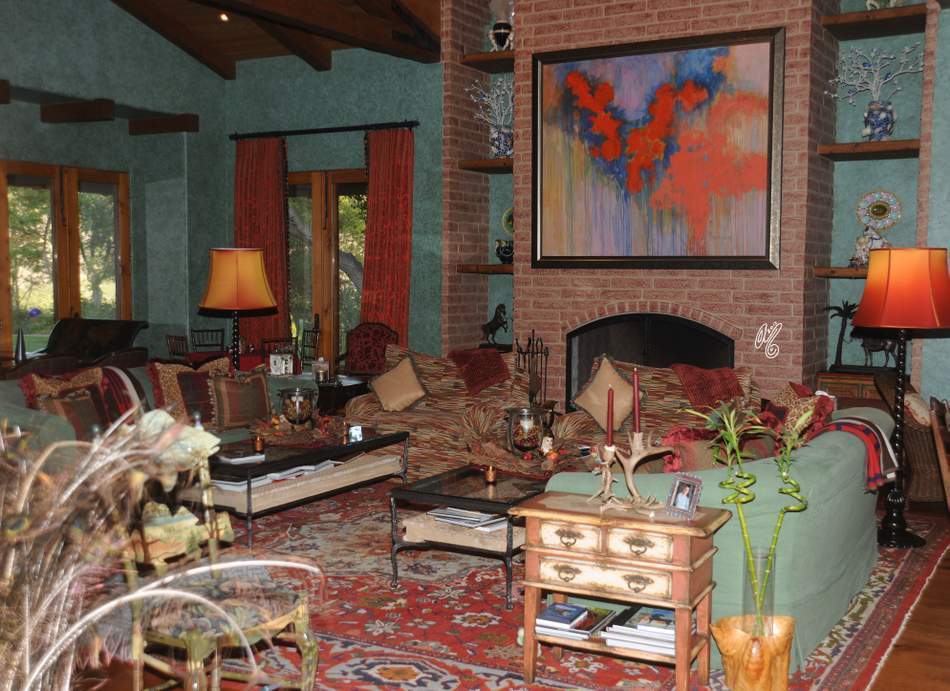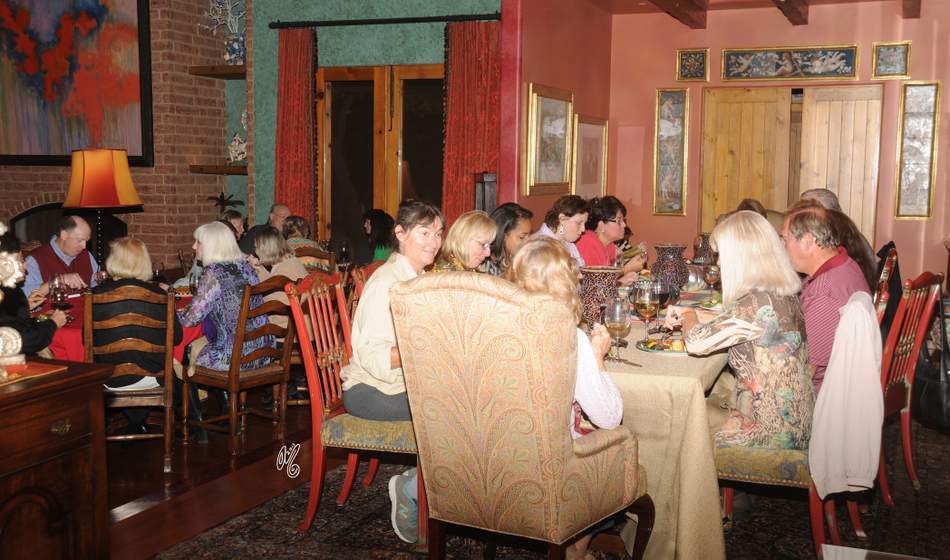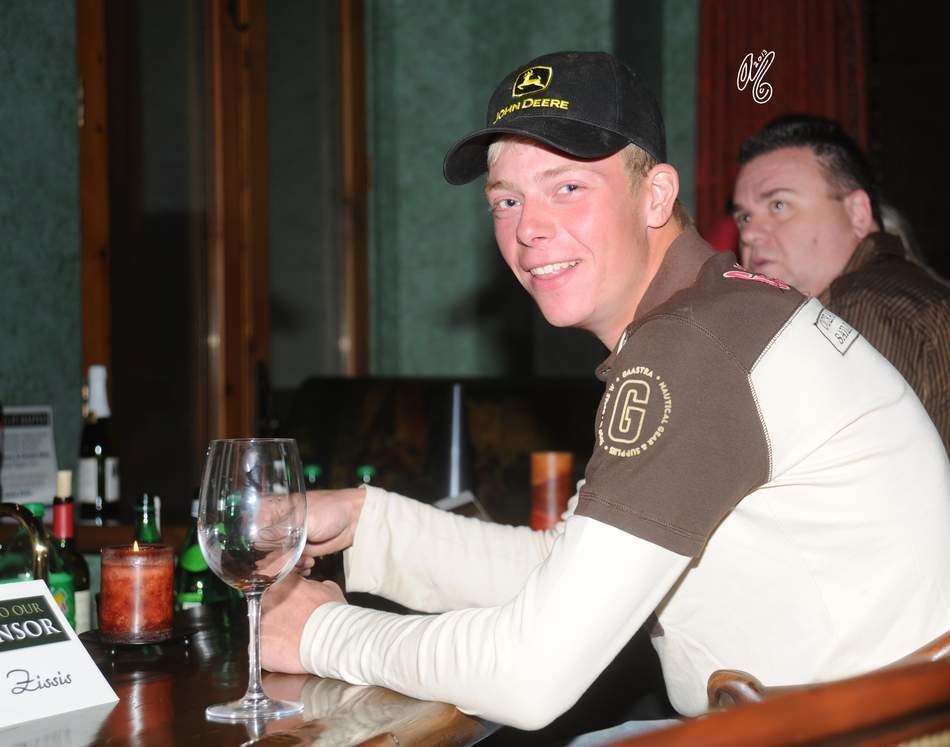The Pyramid Society's 2013 National Breeders' Conference
The Pyramid Society's 2013 National Breeders' Conference:
"The Global Influence of the Straight Egyptian Arabian"
Text and Photos by Lisa Abraham
(In anticipation of The Pyramid Society's 2015 International Breeders' Conference, "The Art of Breeding Egyptian Arabian Horses," sponsored by Bait Al Arab, this article is being republished by kind permission of The Pyramid Society and Arabhorse.com)
The Pyramid Society's 6th National Breeders' Conference titled, "The Global Influence of the Straight Egyptian Arabian" was another educational triumph. This conference, which took place on November 1-2, 2013, in Solvang CA, brought Egyptian Arabian breeders and enthusiasts together from all over the United States and beyond. The Pyramid Society's Education Committee Chairman, Keri Wright wrote, "We have worked very hard to make sure that this year's conference continues the long standing tradition of excellence you have come to expect from The Pyramid Society. We sincerely hope that as the events of the next few days unfold you will find it is time well spent as you further your education, renew old friendships and make new ones, and just bask in the joy of the camaraderie that exists among the breeders, admirers and enthusiasts of the Straight Egyptian Arabian Horse."
Taken from The Pyramid Society's website, in explanation of its mission statement, "By forming an international community of Arabian horse breeders, we seek to preserve the standards of this ancient breed. Through educational offerings with foremost experts in Egyptian Arabian breeding, such as our annual Egyptian Event Seminars and the illustrious National Egyptian Breeders' Conferences, we ensure opportunities for our members to continually learn, grow and adapt." This 6th National Breeders Conference represented this standard.
Each year these educational conferences are planned in different areas around the country. In 2012, Hank and Sandy DeShazer of DeShazer Arabians hosted in Tomball, Texas, while Atlanta and Lexington have also served as destinations. This year we met in the picturesque California city of Solvang, whose region is home to some of the most famous Arabian Studs and breeders in the world.
The Executive Director of The Pyramid Society, Anna Bishop shared, "There are numerous factors to consider when determining a location for our annual Breeders’ Conferences, and after careful review, California was chosen because of its accessibility of airports and conference facilities, and due to the number of members and supporters in the area. Despite the fact we’d held conferences in different areas of the country, we had not held one in the far west. And in addition to the excellent educational opportunities our attendees love to see horses and California and its mild climate this time of the year also provided this wonderful opportunity as well on picture-perfect days to boot!"
Friday: November 1
Keri Wright began with a very important sentiment. He shared, "I would like to open this conference with a most sincere expression of gratitude to those who have made this conference possible. I would first like to thank Ms. Judith Forbis who has gone above and beyond to help arrange for the sponsorships of this conference. And to our premier conference Sponsor, Mr. Mohammed Al Marzouk of Bait Al Arab in Kuwait. I was able to visit with him during the Egyptian Event Europe this year and came to understand his passion for education. We are so grateful for his generosity in making this conference possible."
As with the previous co nferences, each presenter represented the best in their individual fields. Although the topics were diverse, they were woven together in a complimentary fashion. The topics were filled with “food for thought” and practical information; they were interesting, insightful and, in some instances, heartfelt and touching.
nferences, each presenter represented the best in their individual fields. Although the topics were diverse, they were woven together in a complimentary fashion. The topics were filled with “food for thought” and practical information; they were interesting, insightful and, in some instances, heartfelt and touching.
The conference began with three presentations that involved the study of Egyptian bloodlines through three very different perspectives. Scott Benjamin, who gave three large presentations throughout the two days, kicked the seminar off with an informative presentation titled, "The Global Influence of the Straight Egyptian Horse: A Historical Perspective." Scott holds a degree in Animal Sciences and specializes in Equine Management and Animal Breeding/Genetics. He has been actively involved in various capacities with the Arabian horse industry for nearly 30 years and is a respected judge of prestigious international shows. Although Scott's primary experience has been with the Arabian breed outside of Straight Egyptians, he very effectively illustrated with historical information and excellent photographs how Straight Egyptian Arabian horses have influenced the breed at large, including the programs of Crabbet, Weil-Marbach, Poland and Russia.
Scott very effectively illustrated how Straight Egyptians have influenced the breed at large. Although his examples were both detailed and numerous, one in particular effectively made his point. After presenting an image portraying a lineup of decorated mares, Scott shared, “Those are ALL National Champions—every mare in that photo has won a title in either Paris, the European Championships, Scottsdale and/or the US Nationals and ALL of those mares have a tremendously strong influence of Egyptian blood in their pedigrees.”
Following Scott was Joe Ferris with his presentation, "The Immortal Nazeer." Joe, whose career with Arabians began in 1970, is one of the most respected historians in our Egyptian community. As Keri introduced him, he described Joe as "having a passion for research and a passion for the horse." This was clearly demonstrated as Joe's scholarly presentation conveyed the history and influence of Nazeer, while not only touching on our emotional connections to these horses, but also validating them. 
In his presentation Joe made the interesting observation that the United States and North America imported the largest number of Nazeer offspring in the world. As the history of Nazeer and Ansata Arabian Stud are eternally connected, Joe shared, “There was no other farm in the world that owned five Nazeer daughters all at one time.” He then showed the famous image portraying the five Nazeer daughters owned by Ansata: Ansata Bint Zaafarana, Ansata Bint Mabrouka, Ansata Bint Misuna, Ansata Bint Bukra and Ansata Bint Nazeer.
Furthermore, Joe continued, “Ansata Ibn Halima, who was one of the Nazeer get who got more public exposure, was a horse that was universally accepted in America. But what gets forgotten, is that aside from his very strong and well respected role in Straight Egyptians breeding, he was a very popular sire on another level—a lot of the Ansata Ibn Halima get out American bred horses were just magnificent horses. What became known as ‘The Halima look’ was exactly what people were looking for in this country.”
Joe’s presentation then went on to share something that touched many people in attendance. Early in his career, he and his wife made it a mission to meet Morafic. Later he wrote about this experience in an article titled, “Searching for Morafic.” After seeing Shaikh Al Badi and Bint Magidaa as younger horses and after hearing about how the Marshall’s were able to import Morafic, a Nazeer son, Joe and his wife took to the road to see and study as many horses as possible. Joe said, “Our plan was to eventually get to Gleannloch and see that horse—I had become consumed with the image of Morafic and I had to see him. When we received news of his death, I was heartbroken, I thought, ‘Oh my God—I did not get to see this horse in person…’
“The loss of Morafic led me on a search. I wanted to know why these horses were the way they were and it was very stimulating for me to really fill that void of finding Morafic.” Joe then went on to describe a moment with a Morafic son, “When I finally saw Khofo as an old horse down in Florida. He was outside in his paddock, he walk into the stall, he  walked up to me--he came right up to me and turned his head down--as if to look at me large eye-to-eye. I will never forget that look in his face…and suddenly…I felt like I had found Morafic. I began to realize that the pieces of Morafic and the pieces of Nazeer were all there and were coming out and were summed up in seeing that horse—and that was a very exciting moment for me.”
walked up to me--he came right up to me and turned his head down--as if to look at me large eye-to-eye. I will never forget that look in his face…and suddenly…I felt like I had found Morafic. I began to realize that the pieces of Morafic and the pieces of Nazeer were all there and were coming out and were summed up in seeing that horse—and that was a very exciting moment for me.”
Keri Wright concluded the morning session with a presentation titled, "The Global Influence of the Straight Egyptian Arabian Horse: It's Rise to Prominence--Dam and Sire Lines Studies of US, Canadian and Show Horse National Championships and US Egyptian Event Champions." Keri illustrated the show ring accomplishments in both halter and performance of the Straight Egyptian Arabian horse with numerous charts obviating his detailed research. He specifically noted the importance of the Pyramid Society's Reference Handbooks in his own studies and their value for other students of pedigrees and historical data. A complete copy of Keri's charts was included in the conference notebook provided to each attendee.
After Friday's lunch, the conference took a different turn. As Keri introduced the next speakers he posed the question, "How does one accomplish balancing science with art?" Dr. Matthew Binns PhD, a world renowned genetic scientist whose lengthy resume includes publishing more than one hundred and fifty scientific papers in peer reviewed journals, opened the afternoon with a fascinating presentation titled, "The Science Behind Breeding Decisions."
Judith Forbis of Ansata Arabian Stud and Ansata Publications shared, "I first heard Dr. Matthew Binns speak at the WAHO conference in Qatar and was impressed with the unique perspective he offered regarding the use of evolving techniques in mt/DNA testing that will enable breeders to make more educated decisions in selecting stallions and mares for their programs. He addressed a number of significant issues in the use of genetics, while also noting that some things are still unexplainable. He made genetic equations make sense to the average person.
"It was interesting to learn that only one in l00 males reach the breeding shed, while 50% of females breed on!  Another point he drove home was that one should not throw the baby out with the bath water. Genetic diversity is a must, and must be maintained. Certain diseases such as CA, SCID, LF and other syndromes come along and should be dealt with intelligently; they are not reasons to destroy a program because, again, maintaining diversity in the breed is paramount. Dr. Binns was easy to listen to, understand, and he charmed the group with his knowledge and thoughtful presentation. I would recommend anyone holding an educational seminar about horse breeding to invite him.
Another point he drove home was that one should not throw the baby out with the bath water. Genetic diversity is a must, and must be maintained. Certain diseases such as CA, SCID, LF and other syndromes come along and should be dealt with intelligently; they are not reasons to destroy a program because, again, maintaining diversity in the breed is paramount. Dr. Binns was easy to listen to, understand, and he charmed the group with his knowledge and thoughtful presentation. I would recommend anyone holding an educational seminar about horse breeding to invite him.
Although each presentation was unique, Karen Kasper's titled "Understanding the Living Art that is the Straight Egyptian Arabian Horse," was deeply earnest and warm. Karen began as an artist in l981 and has established herself as one of the most important modern sculptors in our global Arabian community. Her work resides in some of the world's most prestigious private, government and royal collections.
Karen asked attendees for a show of hands for anyone who possesses some Arabian horse art in their home or stable. As nearly every hand was raised, with tender humor Karen shared, "Well then you are all on your way to becoming great breeders, because one thing I found when I visited Judith Forbis was that she had a library and a house and a lobby at the farm, that were filled with art. Additionally, I have found that every serious breeder in the world from South America to the Middle East to Europe and across the United States, every serious breeder that I ever visited has multiple inspirational pieces of Arabian Horse Art in their possession."
Karen went on to state, "Art gave breeders a means to form their vision. And that vision translated into the direction they were going to take their breeding--what appealed to them, what they strove to produce with their breeding horses." She illustrated her point by presenting an image of a painting by Alfred de Dreux, one which Judith Forbis had told her had inspired her while at the EAO. She then followed the slide with a near identical image of Ansata Hejazi. She then continued, "Art translates into life...and life translates back into art--it's a continuum, a continuous circle." Karen then shared an image of a sculpture that she is now creating of Ansata Hejazi for his owner, the Conference's Sponsor, Mr. Marzouk. She then continued, "and it translates back into life again as we have an Ansata Hejazi daughter who, after several years of trying, has recently produced two embryos for us."
Following Karen's very personal presentation, several attendees approached her and shared how deeply she had touched them. Jaleen Hacklander of Hadaya Arabians shared, "I was so moved by Karen's presentation--more so than I have ever experienced in a seminar. With both pictures and words, Karen eloquently spoke directly to the emotional bond we have with our Straight Egyptians. We are so fortunate to have individuals like Karen Kasper to foster and inspire all of us into the future."
Recapping the afternoon’s session was Scott Benjamin with a presentation titled, "Balancing Science and Art in the Breeding Barn." Here Scott discussed the practical applications of the science of breeding while still respecting the vision we have for the horses in which we are breeding.
Scott is a strong, confident, charismatic speaker. His style lends itself to memorable quotes. Some that stood out included:
~Individuality or Phenotype tells us what the animal “seems to be”; pedigree or genotype tells us what the animal “ought to be”; and the performance of the progeny tells us what the animal truly “is.”
~You cannot create superiority from inferiority—it doesn’t happen.
~So long as you breed within the standard, individuality is essential to creating and maintaining variation in the market.
~Type is paramount—and is absolutely essential. An Arabian horse has to inspire you as an Arabian. You must know unequivocally, in a flash of a second, that an Arabian horse is an Arabian horse.
~Leave the breed a better place than when you started.
The Silver Maple Farm Open House and Horse Presentation
The Friday classroom session ended early enough for everyone to enjoy a horse presentation at Silver Maple Farm, in Santa Ynez, just a few lovely minutes from Solvang. Christie and Henry Metz, whose breeding families are generations deep, began their program in 1989, with the guidance of their mentor, Judy Jones of Atallah Arabian Farm. Since then they have established themselves as one of the country’s most prestigious breeding farms.
A significant observation about the area is how much animals of all shapes types and sizes are loved and appreciated—and Silver Maple Farm is no different. The farm mascot is a gorgeous, loving Great Dane named Gina who is owned by Bart Van Buggenhout, the manager of Aljassimya Farm who has also purchased property in the area. While Bart is overseas, Gina lives with Christie and Henry, diligently performing her farm duties in between meals and naps.
The presentation began with the Farm’s stallion power: Ali Saroukh, who is a Ruminaja Ali son by the Metz’s root mare, the 1983 Glorietasayonaara; Majestic Noble SMF (Marquis I X Nagda); Symbolic SMF by Majestic Noble SMF and out of Shaboura, a granddaughter of Glorietasayonaara; and finally, Sayo Sahran SMF by Makhnificent KA and out of Bint Bint Sayo, an Ali Saroukh daughter.
The youngest generation followed. In particular, the offspring of Symbolic SMF were most impressive. It is also worth noting the relaxed nature in which these young horses were shown. They were allowed to be babies and were not pushed to perform, although they did seem to enjoy it.
It was obvious the love that Christie and Henry felt for their horses was shared by their staff as well. One filly in particular endeared herself to the entire crowd. Although she was noticeably reluctant to enter the arena, after being patiently encouraged by her handler, Alex, once in--she loved the attention!
The presentation’s finale titled, “Treasures of Silver Maple Farm,” were the mares. The mares were gracefully walked in one-by-one: Jade Lotus SMF, an Ali Saroukh daughter out of Imdals Jade; Ansata Majdiya (Ansata Iemhotep X Ansata Majesty); Princess Samaria SMF who is by PVA Kariim and out of Samura, a Glorietasayonaara granddaughter; and lastly, presented by Henry himself, the beautiful bay Haalani SMF, another Ali Saroukh daughter by Ansata Haalah.
Directly following the Silver Maple Farm Horse presentation was a social and dinner at the Hotel Corque, where the conference was being held. This was a relaxing way to end a day that had been packed with activity. The meal was served buffet style with outstanding table service for our refills and desert. Dinner consisted of the house specialty, braised beef short ribs and pan seared halibut, with mashed potatoes and sautéed vegetables.
It was also at this dinner when Cynthia Culbertson made an announcement concerning the theme of the 2014 US Egyptian Event. She shared, “I was so thrilled to be able to announce a fantastic donation to The Pyramid Society at the Breeders Conference, and generate enthusiasm for the theme of the upcoming 2014 Egyptian Event, ‘Gleannloch Farms: the Legend and the Legacy’. There was spontaneous applause when I announced that Dr. Doug Marshall and Dr. Amrita Ahuja, with the kind assistance of Alexandra Marshall, have donated more than 200 items from the estate of Douglas B. Marshall and Margaret Cullen Marshall of Gleannloch Farms to the Society.
“This collection, which reflects a lifetime of travel and devotion to the Egyptian Arabian, will be the highlight of the benefit auction at this year’s Event, and the entire Event will be devoted to honoring the Marshalls’ contributions to our beloved horses. The collection includes so many treasures, and there is something for everyone. But more importantly, I am so happy that those who go away with any of these wonderful items will forever remember the Marshalls and their dedication and love for both The Pyramid Society and the Egyptian Arabian horse.”

Saturday: November 2
Saturday's conference day began after enjoying a tasty continental breakfast and another morning mingle. This session segued from the philosophies and science of breeding and went straight into the barn. Since the Santa Ynez area is home to some for the most important horses in the world, it is reasonable to assume the veterinary care and available services would also be at the highest level. As Christie and Henry Metz have called this region home since 2002, they were responsible for recommending the day's first speakers.
Dr. Pheobe Smith opened with a presentation titled, "My Mare is Pregnant! Now What? Maximizing the Successful Management of the Broodmare and New Foal." Dr. Smith took us completely through the breeding process--from actually breeding a mare to foal care. Dr. Smith is a board-certified equine internal medicine specialist, and was also a teaching faculty member at Ohio State University. Her academic and hands-on experience as a current practicing veterinarian, enables her to credibly demonstrate how we can best care for our mares and foals. On a personal note, I found that Dr. Smith took sincere interest in the Question and Answer period. One question concerned a matter that she was unfamiliar with, and she asked if anyone found an answer, to be kept informed of the outcome. Furthermore, she made her contact information available for any questions attendees might have in the future.
By way of personal commendation, Christie Metz remarked on qualities every breeder hopes for in an equine practitioner: "Dr. Pheobe Smith is the primary veterinarian at Silver Maple Farm, managing all aspects of equine health. Phoebe is a very attentive and thoughtful… connecting with the animals magically and communicating with us in an easily understood manner…You only have to watch Phoebe do a new foal’s first exam to recognize her thoroughness and skill. On a personal level she is always cheerful, fun and above all professional."
Dr. Fernando Campos-Chillon and his wife Dr. Joy Altermatt gave a fascinating presentation on advance assisted reproductive care, titled "Got Foals? No foal--No Global Influence! Making the Most of Today's Advances in Equine Reproductive Technologies." In a manner that was easily understood they were able to illustrate in appropriate detail advanced techniques such as: intracytoplasmic sperm injection (ICSI), embryo transfer and cryopreservation and genetic analysis. One thing that they both expressed repetitively was sensitivity to the cost of such techniques and procedures. So although Dr. Campos-Chillon stated that these procedure will be more affordable in the future, they balanced the cost of such breeding methods with the market values of such potential foals.
Saturday afternoon wrapped up the conference with a topic that is often overlooked: marketing. Scott Trees opened the session with a presentation titled, "A Primer on Equine Photography for Marketing.” Scott is a man whose huge body of work includes images that for some have come to represent their mental vision of an Arabian horse. Very graciously, he began, "I want to commend all of you as a group. I started with the Arabian horse in 1963 and one of the things that I have observed is how well The Pyramid Society promotes your breed and educates your people."
Scott, who referred to himself as an "advertising shooter," shared, "When I first started we were glorified portrait photographers--it was head shots and body shots and not a lot of variety in terms of the types of shots being used. Then when the eighties rolled around, we were able to start doing some different stuff, and I was one of the photographers who said, 'Let's try something different, let's try to look at what we can do to get attention' and the that is the bottom line--when we are using advertising images, the goal is to get attention."
Scott went on to illustrate his career as a photographer and videographer who has constantly "thought outside the box." He described individual shoots and the often extensive large elements required in a shoot; he discussed his experience with some of the largest farms in the world and also his participation in some of the most meaningful advertising campaigns; and finally he discussed the basics on how to successfully use imagery in a marketing campaign.
Becky Rogers, the Vice President of The Pyramid Society as well as the Chair of the P.R. and Marketing Committee, followed Scott with some very sound advice regarding imagery in her presentation titled, "A Picture Really is Worth a Thousand Words: Selecting the Right Image." What constitutes a marketable image of an Arabian horse is often confusing--not only to newcomers, but is also often the case with seasoned breeders. Through her clever and useful illustrations, Becky demonstrated the differences in what make a marketable photo versus one that is not. She also touched on how to most effectively use images in advertising.
an Arabian horse is often confusing--not only to newcomers, but is also often the case with seasoned breeders. Through her clever and useful illustrations, Becky demonstrated the differences in what make a marketable photo versus one that is not. She also touched on how to most effectively use images in advertising.
Although all of her advice was wise, Becky made a particularly important point. In a community filled with breeders who are experiencing difficulties, she strongly shared, “Although the photographer will help weed through images, it is ultimately the owner’s responsibility, not the photographer’s responsibility, it is your responsibility to create your vision. It is your responsibility to sell and market your vision.”
The final presentation was made by the individual who opened the conference: Scott Benjamin. Scott's presentation, "Effectively Telling the Story of the Straight Egyptian Arabian Horse: Creating and Branding the Image You'll Present to the Global Arabian Horse Market," not only encompassed what both Scott Trees and Becky had said, but went deeper into the principles of Marketing and Advertising, using industry examples.
Dinner hosted at the Residence of Henry & Christie Metz
Simply put, this evening was most lovely. Groups of people gathered in the homes’ many warm comfortable pockets--which were both inside and out. The evening air was cool and mild, so it was easy to enjoy the softness of the Santa Ynez outdoors which was lit up with candles. As we enjoyed the setting before dinner, servers weaved in and out with trays offering appetizers: savory bourbon meatballs and Asparagus with Asiago cheese wrapped in Phyllo dough.
Dinner was served buffet style. The main courses were chicken and a local California favorite called “Tri Tip,” which is also called “Santa Maria” steak because it was in Santa Maria, California where it first become popular. Tri tip is a triangle-shaped cut of beef from the bottom sirloin. Typically it is rubbed with a mixture of salt, black pepper and garlic salt, then barbequed over red oak wood. It is absolutely delicious and certainly a California treat as this cut of meat is not readily available outside of the state.
Complementing the tri-tip and mouthwatering chicken was another local specialty called Santa Ynez salsa, an organic European Green Salad, southern comfort cream scalloped potatoes and seasonal grilled veggies in olive oil and herbs. For desert, double fudge brownies and scrumptious lemon bars coated in powdered sugar were offered.

~
At the 2012 Breeders conference, from one of her presentations, Judith Forbis shared, “To achieve a goal, one must have love, vision, knowledge, understanding, intuition, courage, creativeness, patience and the willingness to sacrifice MIGHTILY. In order to create there must be a dynamic force and what force is more potent than love. Love of horse is our motivating force for being here."
Not only did these few November days in California offer multiple community enriching opportunities, but also some presentation content that was more emotional in nature—both served to remind us why we continue forward. However, this conference also dealt with many very serious classroom topics. As the ramifications of a struggling economy continue to challenge the horse market, it is learning opportunities like these that help empower breeders. What you did not hear in this conference was that it was easy to breed horses; what you did not hear in this conference was that it was inexpensive; and most importantly, what you did not hear was that you were already marketable or that someone else was going to do that for you.
Scott Benjamin repeatedly stressed the passion and dedication a breeder must have. Therefore I would like to conclude this editorial with what Scott shared, “The only way one can really be a successful breeder is TO DO. You have to learn and there is no substitute for experience-there isn’t. You have to love what you do because it is a thankless job—an absolutely thankless job. There is an incredibly long generation variable between success in one generation and success in the next; and before you test the success of that generation you are already ten, twelve, fourteen years down the road. It is your PASSION that will keep you going.”

~
For information on The Pyramid Society's 2015 International Breeders' Conference, "The Art of Breeding Egyptian Arabian Horses'" generously sponsored by Bait Al Arab, please visit:
http://pyramidsociety.org/events/2015-international-breeders-conference
Lisa Abraham is an International Journalist and Photographer from the United States. Although she does free-lance for various media, her primary dedication is to Arabhorse.com as a Premier Contributor and Representative. She is also a breeder of Straight Egyptian Arabians.


